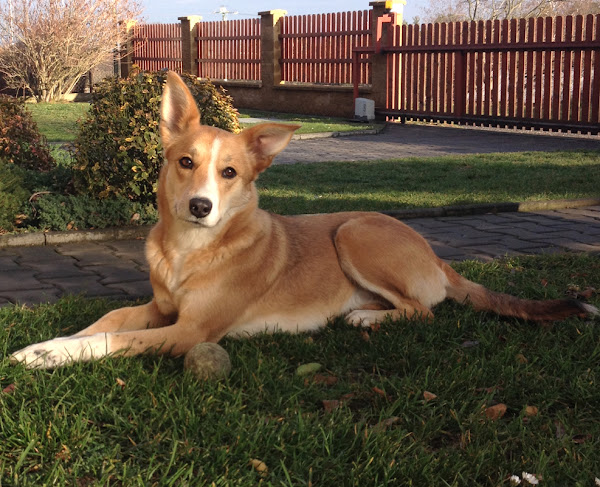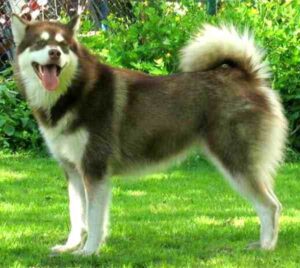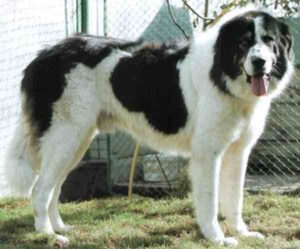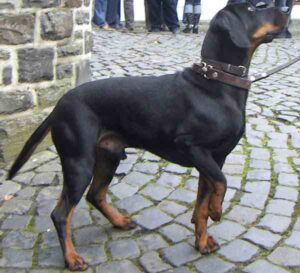The Carolina dog is a breed of medium-sized, feral dog that lives mostly in the Southeastern United States (especially in isolated stretches of longleaf pines and cypress swamps). It is also known as Yellow dog, Yaller dog, American Dingo or Dixie Dingo.
Rehoming of Carolina dogs has recently become popular, and they can make good domestic pets with proper socialization. Since 2008, artificial selection efforts to establish them as a standardized breed (usually capitalized as Carolina Dog) has made some progress, with recognition in two smaller national kennel clubs, and acceptance into the breed-establishment program of a major one.
Originally a landrace breed, the Carolina dog was rediscovered living as free-roaming population by I. Lehr Brisbin Jr., though originally documented in American dog-related publications in the 1920s. Carolina dogs show admixture with dog breeds from east Asia.[1]
The breed is belived to have originated in Asia and closely resembles the Asian pariah dog. They made their way to North America alongside merchants across the Bering Straight 9,000 years ago and slowly migrated until they hit the southern United States.
The Carolina dogs have lived in the wild in the southern United States for several hundred years, and are still spotted in parts of Georgia and South Carolina.
Bones resembling those of the Carolina Dog have been found in ancient Native American Indian burial grounds, signifying they were likely kept as pets by American Indians. The breed was officially recognized as a breed by the American Kennel Club in the 1970s.
Carolina Dog Characteristics
The Carolina dogs are medium sized breed and are very beautiful. The ears are characteristic and are erect, very long, and moderately slender, tapering way up to elegantly pointed tips and they can be individually turned to the direction of any sound, providing extremely sensitive hearing.
The breed ranges in build from muscular yet slender and graceful to somewhat stockier animals. Their legs are also graceful and strong. The hind midsection is firm and narrow.
The overall build in a healthy, properly fed Carolina is svelte to somewhat stockier, strong and athletic. The tail is usually upturned and often has a hooked kink in it. The paws are relatively large. The snout and the notably elongated, fox-like ears are spitz like.
The coat of the Carolina dog is usually short and smooth (which is a characteristic of a warm-climate dog).
The eyes are at an oblique angle and almond shaped, vary in color, but are usually dark brown or medium to dark orange. The area along the edges of the eyes is often (but not always) a distinctive black “eyeliner” coloration which becomes more pronounced by contrast in lighter-colored dogs.
The lips are often black, even in light-colored dogs. Frequently, puppies have a melanistic mask that usually fades as the adult coat comes in.
Colors of the Carolina dog vary, and may include reddish ginger, buff, fawn, black-and-tan, or piebald with or without white areas on toes, chest, tail tip and muzzle.
Average body height of the mature dog is between 17 and 24 inches at the withers. And average live body weight of the mature dog is between 15 and 30 kg.

Temperament
The Carolina dogs are incredibly loyal and will form strong bonds with their humans. They are wary of strangers and many watch them suspiciously, which makes them excellent watchdogs.
These dogs are highly intelligent but also have a stubborn streak ingrained into their makeup. They may not be easily trainable, but they do have a willingness to please. Be patient for training them and use positve reinforcement.
These dogs are also described as sturdy, quiet, gentle, brave, cunning and resourceful. They can adapt themselves to any climate or lifestyle.
Lifespan
Average lifespan of the Carolina dog is around 15 years.
Feeding
How much a mature dog eats depends on it’s size, age, build, metabolism and activity level. Dogs are individuals, just like people, and they don’t all need the same amount of food.
The Carolina dogs are medium sized dogs and are moderately active. So, their diet should be formulated for a medium-sized dog with average exercise needs. You can also consult with a vet in your area for better feeding recommendations.
Caring
Taking good care of the animals is very important for raising Carolina dogs. They should get at least 60 minutes of exercise daily to help keep them fit.
These dogs groom themselves almost like cats, and they are known for being clean. They will need help with their nails, though. Trim them before they get too long, usually once or twice per month.
Like other dogs, you should keep up with your Carolina’s regular veterinary checkups to detect any health concerns early. Your vet can help you develop a care routine.
Health
The Carolina dogs are generally healthy. But like all other dog breeds, they are also prone to certain health conditions.
Their common health problems include hip dysplasia and elbow dysplasia. Always try to keep good contact with a vet in your area.
| Breed Name | Carolina |
| Other Names | Also known as yellow dog, yaller dog, American Dingo or Dixie Dingo |
| Breed Size | Medium |
| Height | Between 17 and 24 inches at the withers |
| Weight | Between 15 and 30 kg |
| Good as pets | Yes |
| Climate Tolerance | All climates |
| Color | Vary, and may include reddish ginger, buff, fawn, black-and-tan, or piebald with or without white areas on toes, chest, tail tip and muzzle. |
| Lifespan | Around 15 years |
| Good for children | Yes |
| Rarity | Common |
| Country of Origin | United States |






